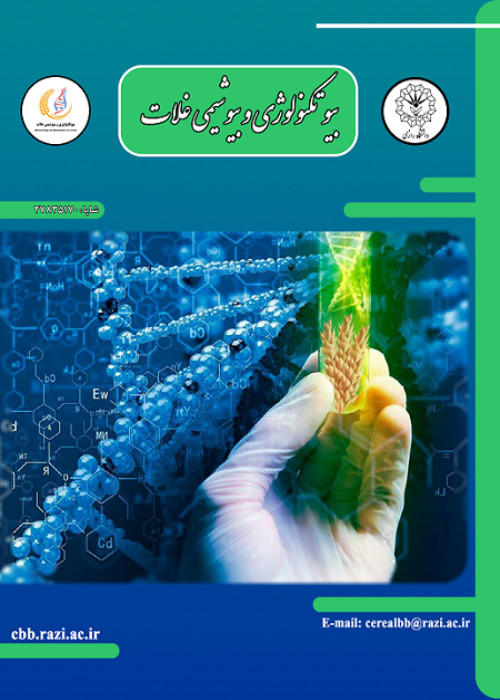The study of genetic diversity in Agropyron intermedium genotypes using ISSR and leaf soluble proteins markers
Genetic diversity in plant communities is the basis of breeding programs, and in conventional breeding programs, desirable populations are selected from within a population with high genetic diversity.
The genetic diversity for 13 genotypes of Agropyron intermedium was studied by ISSR markers and soluble leaf proteins in the biotechnology laboratory of Kermanshah Agricultural Research and Education Center in 2019.
Based on the results of molecular data analysis of proteins, 15 bands were observed, and polymorphism was seen in only four of them. The highest number of bands were related to genotype G12 with 15 bands and the lowest ones were related to G4 and G5 genotypes with 11 bands. In general, the leaf proteins did not have the ability to differentiate within the species. Although, based on the similarity matrix and cluster analysis for soluble leaf proteins, the genotypes were divided into three groups. The first group included genotypes G4, G5, G9, and G11. The second group consisted of genotypes G1, G2, G3, G6, G10, and G12. finally, the third group included genotypes G7, G8, and G13. The first group had the greatest genetic distance from the second group. In total, the ISSR primers were able to produce 86 bands, of which 10 bands were monomorphic and the other bands were polymorphic. The average number of bands produced by each primer for 13 genotypes was 7.17 bands. The primer of IS11, IS12, and IS14 showed the highest number of bands (10 bands), and IS3, IS9, and IS15 showed the lowest number of bands (5 bands). A desirable polymorphism between genotypes was observed based on ISSR markers and the primers of IS3, IS5, IS9, IS10, IS11, and IS14 were determined for the intraspecific diversity study of Ag. intermedium as desirable primers. According to the cluster analysis based on the data obtained from the ISSR primers, the genotypes were placed into three groups. The first group consisted of genotypes G1, G2, G3, and G5, and the average similarity coefficient for the genotypes of this group was 0.667. Genotypes G9, G11, G12, and G13 comprised the second group, and the average similarity coefficient for these three genotypes was 0.656. The third group included genotypes G4, G6, G7, G8, and G10 with an average similarity coefficient of 0.660. In addition, based on the ISSR marker, the genotypes G2 and G5 had the highest genetic distance with the genotypes G6, G7, G8, and G10.
Genotypes G7 and G8 had the greatest distance with genotype G5. Therefore, due to their genetic distance, these two genotypes are suitable genetic materials for breeding programs and the use of heterosis in order to obtain cultivars with superior characteristics, and it is suggested to use them in future studies.
- حق عضویت دریافتی صرف حمایت از نشریات عضو و نگهداری، تکمیل و توسعه مگیران میشود.
- پرداخت حق اشتراک و دانلود مقالات اجازه بازنشر آن در سایر رسانههای چاپی و دیجیتال را به کاربر نمیدهد.



